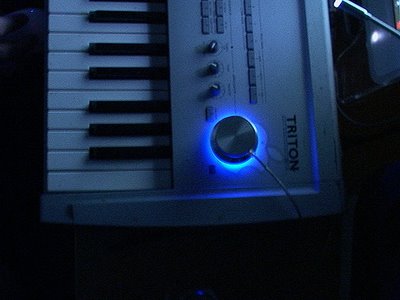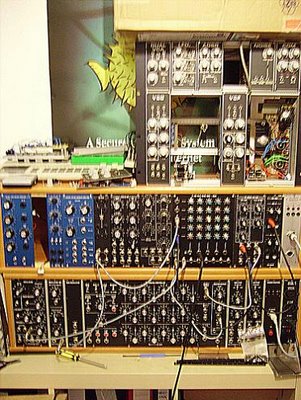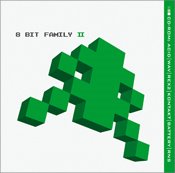
Happy 4th to everyone in the US! Here's a nice red, white and blue Buchla Music Easel for yah. And... It's for sale. No joke. A measley $20k will get this beauty. Title link takes you to the listing on gearslutz. If you don't have an account and don't wan to register, the details of the sale are below. That's one heck of a list. The seller is
Guidotoons. Start drool now.
"BIG ASSED SALE
Vintage keys-
Buchla Music Easel 208/218/power supply & original case
excellent condition $20,000.00
Moog 35 synthesizer w/ Synth.com sequencer, moog filter and much more $20,000.00
1963 Hammond C3 w/ newer Leslie 122
Little old lady condition…literally
$3500 Nashville Pickup only
RMI Keyboard Computer II RARE!!! excellent 100% working $1500 comes w/ two extra KC I’s for parts Nashville Pickup only
Yamaha YC45-D combo organ…excellent condition $750.00 Nashville pickup only
Recording gear-
iZ Radar w/monitor/cabling/all remotes classic cards all dox and boxes excellent condition all current software and upgrades $6500.00
Pendulum Audio MDP-1 stereo tube pre near mint $1750.00 SOLD!!!
2-Neve 31102 mic pre/eq modules in Boutique Audio rack perfect shape w/Fred Hill line amp mod $6500
2-Aphex 622 Expander/gates $350 each
Neve 33609C stereo comp/limiter excellent condition $2750.00 SOLD!!!!
Telefunken/Neumann U-67 excellent all original $4500.00
2-AKG C-60 great condition $2000/pr
Vintage guitars-
1949 Gibson SJ-200 w/70’s Gibson hsc excellent condition $6500
1957 Gibson LP Jr. refin and relic’d by Mike Lennon w/ ossc $4750.00
2003 Alembic Stanley Clarke Brown Bass reissue near mint w/hsc $3400.00
Vintage drums-
1966 3 pc. Ludwig Club Date kit w/ bags $1250.00
Email guido@guidotoons.com for pics, more info. I RARELY check my messages here so use the email please.
I will entertain trade offers for the following:
API 500 series rack (10 space) and related 500 series pres, eq's.
Rickenbacker Capri guitars
1950's Gibson L-5C
Sorry...NO PAYPAL.
Thanks again....
Guido
www.guidotoons.com"
####################################################
Update via Guido on AH:
"Let me bring everyone up to date on my Buchla saga.
I bought a very large Moog from a gentleman in California for $13,500 shipped.
I took a Moog 15's worth of modules out of the system along with a Bode frequency shifter and the 960/962 combo. I already had a fire damaged 960/962 along with a Moog filter bank and a 921 oscillator bank.
I made a Moog 15 and extension cabinet with the "good" 960/962 and the Bode.
I traded Paul a "Moog 55's" worth of modules straight across for a large Buchla 200.
Only three Buchla modules were damaged by the coke or coffee spillage. The 219 keyboard and both Marfs. I sent those to JL in Canada who, after six months, had not gotten them to work. So I sold them...not working...to a gentleman in California for $11,500.
I had aquired 3-259 "kits" from Don and had Julie Yarbrough build them for around $1000 each. I also had her build a 281 "kit". I put those in the 200 along with my 208 and 218 from my Music Easel. She also refurbished the other modules for around $2500 or so. I then aquired two more 259's from David Kean for $5000. I eventually sold the original Buchla built 259's (for what I paid) because the "kit" 259's sounded, worked and looked better.
I had Peter Grenader build a Milton for the Buchla. This was around $2000. I also bought a 221 touch keyboard from Kean for $4000.
I used the system for two years or so and got an offer I could not refuse for it, minus the Easel and Milton, for $46,000. I took it. I then sold that same cat my Milton for $1750. I also sold the Moog 15 for $7500 and the 960 extension cab, MINUS the Bode, for $5500.
I sold the Bode to a very persistant gentleman in California for....$6,000!
So let's do the math:
I bought-
large Moog $13,500
Moog filter bank $1750
Moog 921 bank $2000
2 Moog 15 cabs $500
Buchla restoration/modules $5500
Buchla 221 $4000
Total $27,500
Traded a Moog 55's worth of modules for the 200.
I sold the Moog 15 for $7500. Sold the extension Moog cab for $5500. Sold the two Buchla modules for $11,500. Sold the Bode for $6,000. Sold the big 200 system for $46,000.
Total $76,500
I still have the Easel. I also aquired a mint Moog 35 last year, so I still have a "rig".
I hope this brings everyone up to date on my Buchla 200/Easel and financial gossip.
Guido"
 flickr by unity.project. Korg Triton with blue glowy mouse.
flickr by unity.project. Korg Triton with blue glowy mouse.

















































